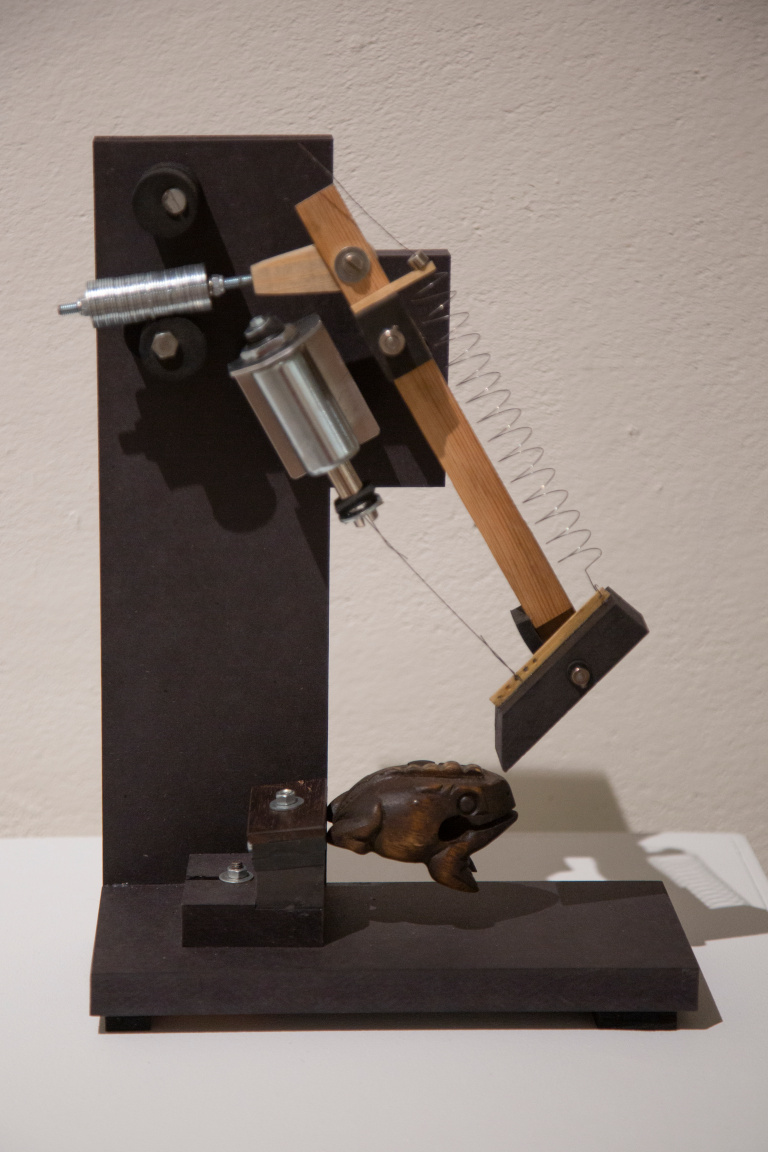A solo addendum to the Deep Rhythms percussion anthology. Ideal for outdoor performances (so-called "camouflaged" music). 6 pages, 12€.
108 pages, 34€.The idea of deep rhythms really began with deep scales, that were observed when a few 12-tone theorists noticed that if one lists all the distances between all the notes of a black-note scale, each distance comes in another quantity.
Later, as other music theorists turned their attention to rhythms, they moved beyond twelve and began finding deep formations all over. In 2018, my friend Franck Jedrzejewski computed a complete list of deep rhythms all the way from the three-note and four-note rhythms contained in 7-beat cyclesto the 26-note deep rhythms contained in 50-beat cycles, a list of numbers some 50 pages long. This was a gold mine for me.
I composed seven movements in total, for various numbers of percussionists. All are strictly wood block music, and all are deep rhythms of one sort or another.
On page 13 of Looking at Numbers (2014) is a drawing that represents the three homometric pairs of five-note chords on the chromatic scale, using permutations calculated by Franck Jedrsejewski.
Although that drawing never became the piece we were looking for with 108 five-note chords, it did become a composition of 108 five-note rhythms, premiered as an Illustrated Music video five years later, and now as a score for a solo wood block. 12€.
Homometric pairs for two wood block players; infinite duration, preferably outdoors. 13€.

A collection of mathematical rhythms played on pieces of wood.
This set includes several short pieces: Solution 571,
Quartet, Three Tempos,
Call and Response and Deep Rhythms.
Originally written as a sound installation, where
mathematical rhythms are played by automata conceived and built by Martin Riches, premiered in Lausanne in February 2019.
Three of these pieces, Solution 571, Call and Response and Three Tempos, can be programmed in concert situation (occasionally interlaced with spoken text) with live wood block players. 12€ per piece, or all three for 30€.
`Knock on Wood’ is said to bring good luck, but in the literal sense that just means making some gesture of tapping on wood. With Tom Johnson everything is literal, so we are talking about actually knocking on actual pieces of wood: wood blocks of different sizes, different origins, activated by the machines of Martin Riches. Five machines, five spaces, five different kinds of music.
Tom Johnson has always been a minimalist, and that has not changed with age. Much silence. Very little sound. And dry, hard, incisive sounds. Little sounds like needle points. Not even notes. Nothing melodic, no harmony here. Just rhythms that mark the time with their own language. A mysterious clock. (When he is not working on Knock on Wood, Martin Riches also makes marvellous wooden clocks.)
Mechanical music. We’ve known about that for a long time. It began in fact in Baghdad in the ninth century. And Martin Riches sticks with the mechanical, refusing the electronic, too easy.
The spirit of the machine is an old question. A machine is stupid, it does what it is told, blindly, mechanically. And yet, a machine is the result of abstract work. Knock on Wood does not function at all unless Martin Riches has thought the machines. And more than that: the rhythms, where do they come from? Why are they this way and not another way? What secret message do they deliver? They are the incarnation of what thought?
Martin Riches, Tom Johnson, an old companionship, which began in Berlin in 1983. A dozen collaborations since. It is normal that one who thinks of music in a logical way has good communication with someone who constructs automatic devices.
A collaboration with Luiz-Henrique Yudo for six percussionists. The music goes BACK & FORTH between the two composers every 10 seconds following two graphic designs made by each composer. Exactly 10 minutes, score with color graphic, 18€.
Five movements for percussion trio: Similarities, Differences, Canons, Well-Formed, and Mirrors. Easy to play for percussionists who never make mistakes. Small instruments. About 15 minutes, 18€.
Three percussionists seem to be “mocking” one another as they progress from one rhythm to another slightly different rhythm. See detailed description.
One person counts to five on several levels. See `Music with text’.
 Tilework for Log Drums is in seven sections, showing the seven possible solutions for tiling a line of 18 points with six voices, each voice inserting three notes in one of five tempos:
Tilework for Log Drums is in seven sections, showing the seven possible solutions for tiling a line of 18 points with six voices, each voice inserting three notes in one of five tempos: 1 : 2 : 3 : 4 : 5. I wanted to hear the music played on log drums mostly because I like the sound of these instruments, but also because the notes of log drums tile the playing surface a bit the way the rhythmic tiles cover the 18-beat phrases in this piece. I can imagine the music played as a virtuoso solo, though the counterpoint will be clearer, and the rhythm will flow more smoothly, if played by an ensemble of two to six musicians. The score was originally published as Tilework for Five Conductors and One Drummer, no longer available.
Score: 12€.
Nature is a book one can read, but the language is mathematics.
Galileo Galilei
The day Galileo Galilei discovered the law of the pendulum, I’m sure he thought he was reading the book of nature, and when I play my pendulums I sometimes have a similar feeling. I can not control their movement and can only try to follow their rhythm, their natural rhythm. The law of the pendulum is only one among thousands of laws that control the world we live in, not counting those yet undiscovered, but it is a natural law that can be seen and heard rather easily, and often people who attend performances of Galileo also feel that they are not only hearing music, but also reading a bit from the book of nature.
Tom Johnson
Make your own instrument with five pendulums. 16 pages, 18€.
Galileo is a composition/instrument that swings on five pendulums. The slowest of these hangs from a line about 260 cm long, suspended from a height of about four meters. The other four pendulums must be carefully measured, following the formula discovered by Galileo Galilei some 500 years ago, so as to make their cycles in 1/2, 2/3, 3/4, and 4/5 the time necessary for the longest. A sequence of short compositions allow us to hear all the different combinations of tempos. The piece has evolved slowly from three pendulums to five, from 10 minute to over 40, in a variety of situations.
The precise measurements, and the precise metronome markings that result, may vary, depending particuarly on the performance space, the maximum height, and the height at which the performer wants the pendulums to swing. But the proportions must be quite exact, in order for the different rhythms to be in proportion.
| Pendulums from low to high | I | II | III | IV | V |
|---|---|---|---|---|---|
| Rhythmic ratios as whole numbers | 12 | 15 | 16 | 18 | 24 |
| Rhythmic ratios as fractions | 1 | 5/4 | 4/3 | 3/2 | 2 |
| Length of strings as fractions | 1 | 16/25 | 9/16 | 4/9 | 1/4 |
| Suggested exact length in cm | 288 | 184.3 | 162 | 128 | 72 |
| Approximate metronome speeds | 20 | 25 | 26.7 | 30 | 40 |
Mathematical music, systematically following finite automata, for six percussionists. Eighteen short movements, 50 minutes in all, but playable in incomplete versions. Score 65€, parts 65€.
For three instruments; although instrumentation is flexible, it is often played with percussions and a particularly good performance was realized with bamboo sticks. See detailed description.
One of the key works in the evolution of the composer, who often played it himself, on his set of nine bells, suspended from the ceiling. A few rather athletic percussionists continue to present the work. Nine movements in about 50 minutes, 17€.
